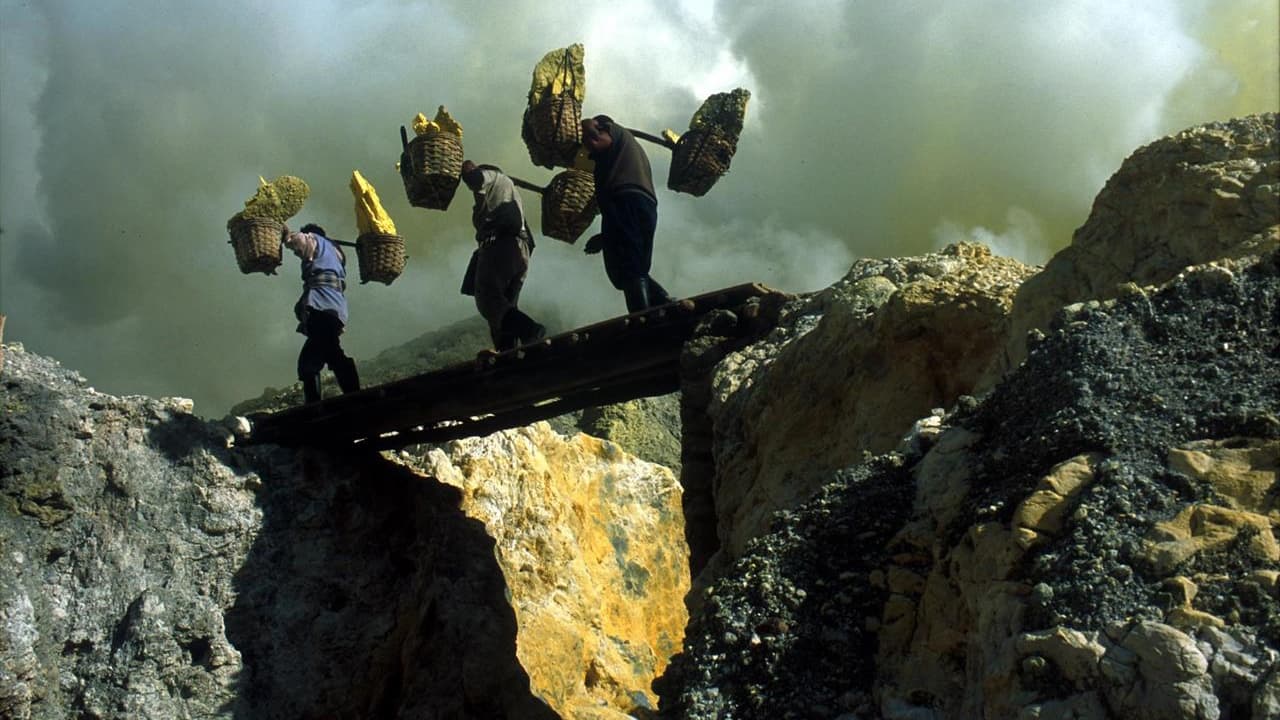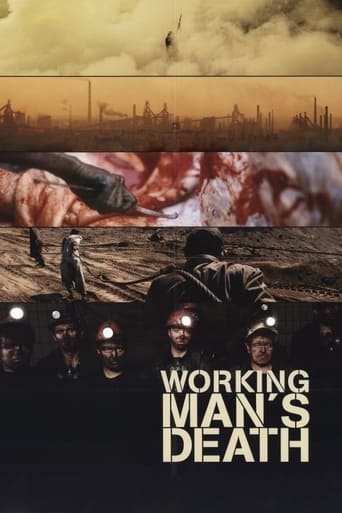

I was fascinated by this documentary and wanted to see more. Then the long, never-ending series of animal murders began. I am not an animal activist but I should be, because nothing bothers me more than to see a human being kill an animal. Those scenes made Hannibal Lector look like an alter boy.The horror of it - I watched for 3 minutes or so and had to turn it off. Each animal saw and smelled all the death around him as he was dragged around in the mud, waiting his turn. The twitching bodies of those still not quite dead . . . too much. I realize that those people did it to feed and support themselves - but I will never forget those scenes. Maybe that was the point.
... View MoreI recently saw this film at the 2006 Milwaukee International Film Festival. It's a moving testament to the strength and resiliency of human beings, who manage to find a sense of purpose, and even pride, in the sheer act of survival under the most difficult circumstances."Workingman's Death" is an eye-opening experience that takes the viewer into some of the worst working conditions in the world: an illegal coal mine in Ukraine, a slaughterhouse in Nigeria, a sulfur mine in Indonesia, and a shipbreaking yard in Pakistan. The film starkly portrays these harsh settings and the (mostly) men who toil within them. There is no "expert" testimony, no voiceovers, no narrator, only the men themselves who do the work. The camera follows them as they carry out their tasks, take breaks and go home after a hard day. The only commentary is from the workers themselves, talking about their jobs.The film is an intimate portrait of how these workers keep their spirits intact through all of this back breaking labor. The Ukrainian coal miners see themselves as heroes, carrying on the legacy of the once-great Soviet coal machine. In Indonesia, a rabble-rouser comes to the sulfur mine for work, and, amidst his dangerous and physically grueling work, shoots the breeze with his coworkers about prostitutes and bar brawls. A worker in the Nigerian slaughterhouse says that his job cleaning the severed heads of cows makes him special, because he has skills that other workers don't have. The workers at the shipbreaking yard in Pakistan consider themselves part of a brotherhood; they look out for the fellow workers and pull together to help a friend in trouble.In "Workingman's Death," we see the will of people to carry on. The workers in this film are oppressed people, but they refuse to think of themselves as slaves. They find pride, brotherhood and even humor in their work, no matter how dire the circumstances. The cinematography is beautiful, the music haunting. Never before has hard work been more artfully portrayed.The film features graphic footage of animal slaughter, and the segment on the Nigerian slaughterhouse will be especially disturbing to many people. Unfortunately, it's the graphic nature of this film that will probably prevent from getting wide release, at least in the US. This is a shame, because this is a film that can remind us all of our common humanity.
... View MoreI haven't been so shocked by a movie in a year. This film represents the extreme experiences of workers in five places in the world. It's extraordinarily well shot and it's provoking and profound. Unlike Michael Moore, Glawogger allows the viewers to think, to feel and to react... I strongly recommend this film. There's nothing funny about this. The filmmakers share the experiences with the characters they depict. The claustrophobia of an illegal mine in Ukraine, the long exhausting walks of the sulfur workers in Indonesia, the bloodbath of the butchers in Nigeria, the danger of the ships cemetery in Pakistan and the last days of an iron factory in China. It depicts the state of the workingman in the world nowadays. 10 out of 10.
... View MoreVery good documentary about the working conditions of five groups of workers. Even though it's the twenty-first century, the director wants us to know that a lot of workers across the world have not benefited from the advancement in technology. First, we're off to Ukraine to learn about the work of some coal miners. Their work conditions are just unbelievable. Then, the director brings us to Indonesia to show us the hard work done by the sulfur miners (I didn't know nothing about this line of work). We are then transported to Pakistan, where we are shown the work of ship-breakers. Again, I was unaware that ship "cemetaries" of this sort still existed today. The open slaughterhouse of a Nigerian city is next. Animal activists beware: don't watch! I was just fascinated by the chaos that seems to reign in that place. Finally, we are shown the working conditions in the steel industry of China. All those segments are presented without real context. There's no narration. But it's easy to follow, to get the point. And the images say a thousand words. Beautiful cinematography and very good camera movement. Some times, the camera moves with the subject, Some times, subject and camera are not moving. It's like a photo shot. One thing is for sure, you always feel like you're in the middle of the action. Even though, you see the despair, you can also see hope in what most of these workers say. Watch it. It's a great eye-opener.Seen at the Toronto International Film Festival (at the Cumberland Cinemas), on September 17th, 2005.87/100 (***½)
... View More